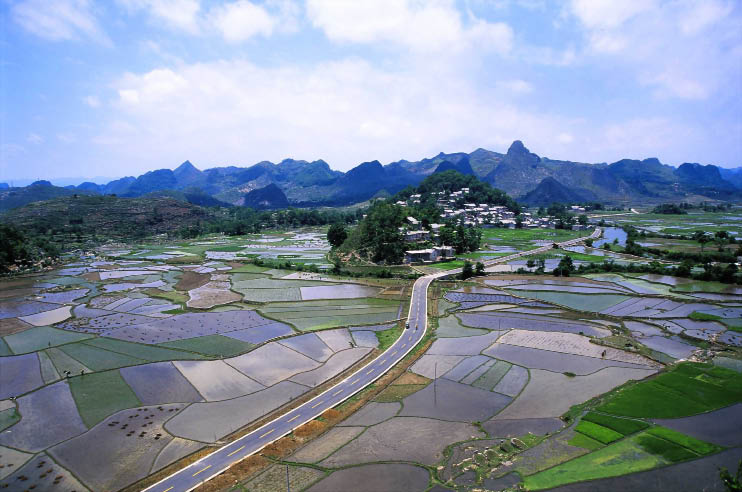Guizhou, Nature’s Dreamscape
By XU YING
GUIZHOU Province has long suffered from a regional inferiority complex. A plateau in China’s southwest, the province has Sichuan and its world-famous pandas to the north; Yunnan, whose spectacular towns include Shangri-La (Zhongdian), to the west, and Hunan Province, home of much Communist Party lore, to the east.
But as those who have actually visited Guizhou can attest, the province has nothing to worry about. Guizhou boasts some of the most spectacular scenery in all of China. More than 90 percent of its land area is mountainous. Karst formations – vertiginous stone structures that resemble super-sized stalagmites – dominate the landscape. Karst scenery was the inspiration behind the spectacular “floating mountains” in James Cameron’s Avatar. In reality, one doesn’t need to make an interplanetary voyage to experience such otherworldly wonder; a trip to Guizhou will do just fine.
The fame of Guizhou’s neighbors means the province has long stayed off the touristic radar in China. Nowadays, though, a trickle of travelers are finding their way to the southwest’s best kept secret.
 |
| Shitouzhai, or Rocky Village, a Bouyei ethnic community in Anshun, Guizhou Province. |
Stunning Natural Scenery
Chief among Guizhou’s attractions are, of course, the mountains. But for me personally, it is the bodies of water surrounding mountain chains that give the province’s topography its tranquil, timeless charm. The mountains are like the sharp features on the beautiful face of the land, one might say, but the water gives the face its beautiful, silken skin.
Mountains are everywhere in Guizhou. The Dalou Range forms the provincial border to the north; the Miaoling Mountains traverse the center; the Wuling Mountains extend down from Hunan Province, while the Wumeng Range towers high in the west.
According to statistics, karst topography accounts for 61.9 percent of the province’s total area, or 109,084 square kilometers. The structures – which have to be seen to be believed – were formed by the millennia-long erosion of soluble bedrock. Hard rock remained intact while the land level fell, eventually creating the karst landforms one sees today. They are grand, imposing structures, and represent a sort of stubbornness in the face of nature; a bold refusal to be ground down to size, and a testament to the awesome geology of our constantly changing planet.

